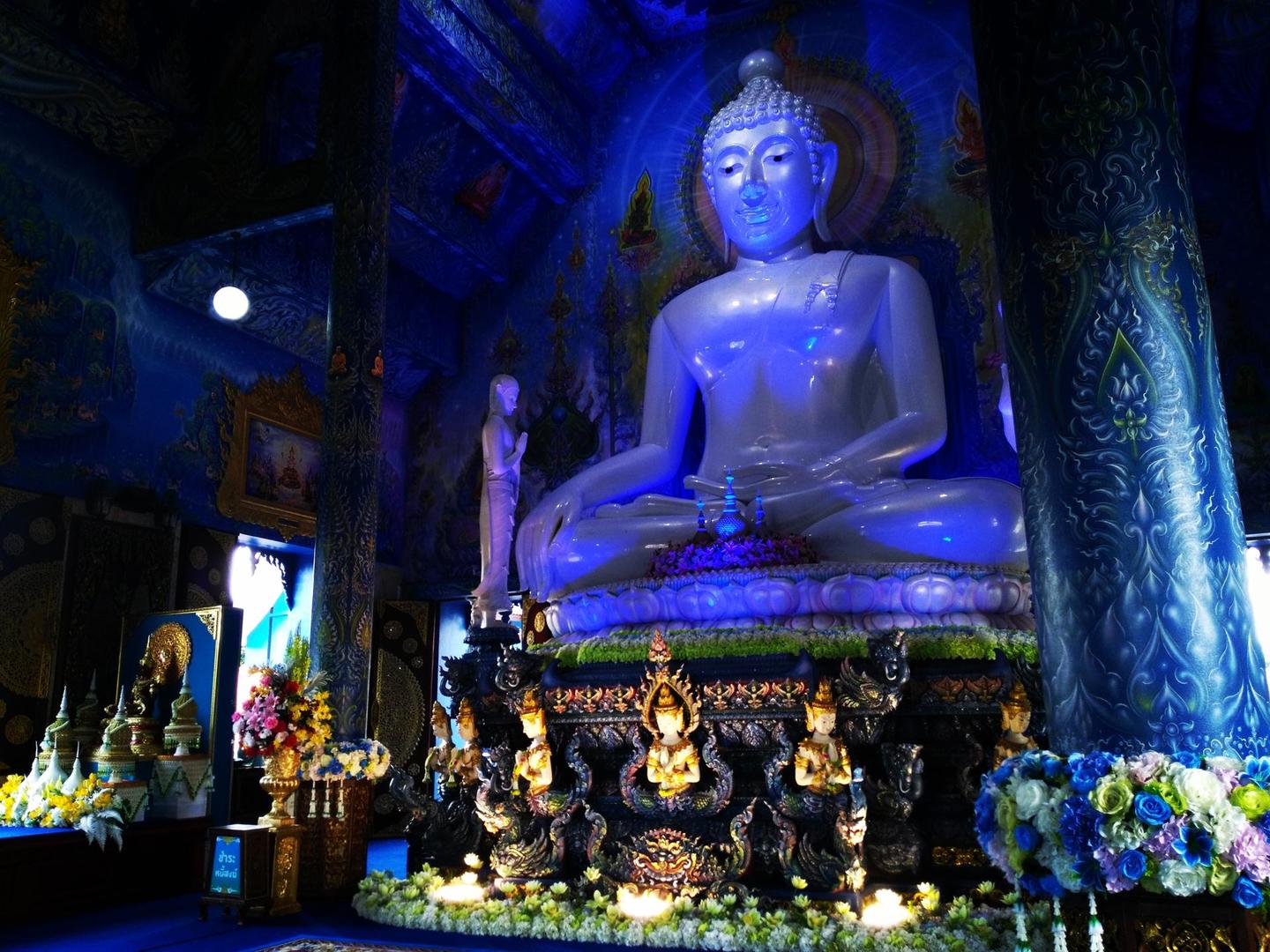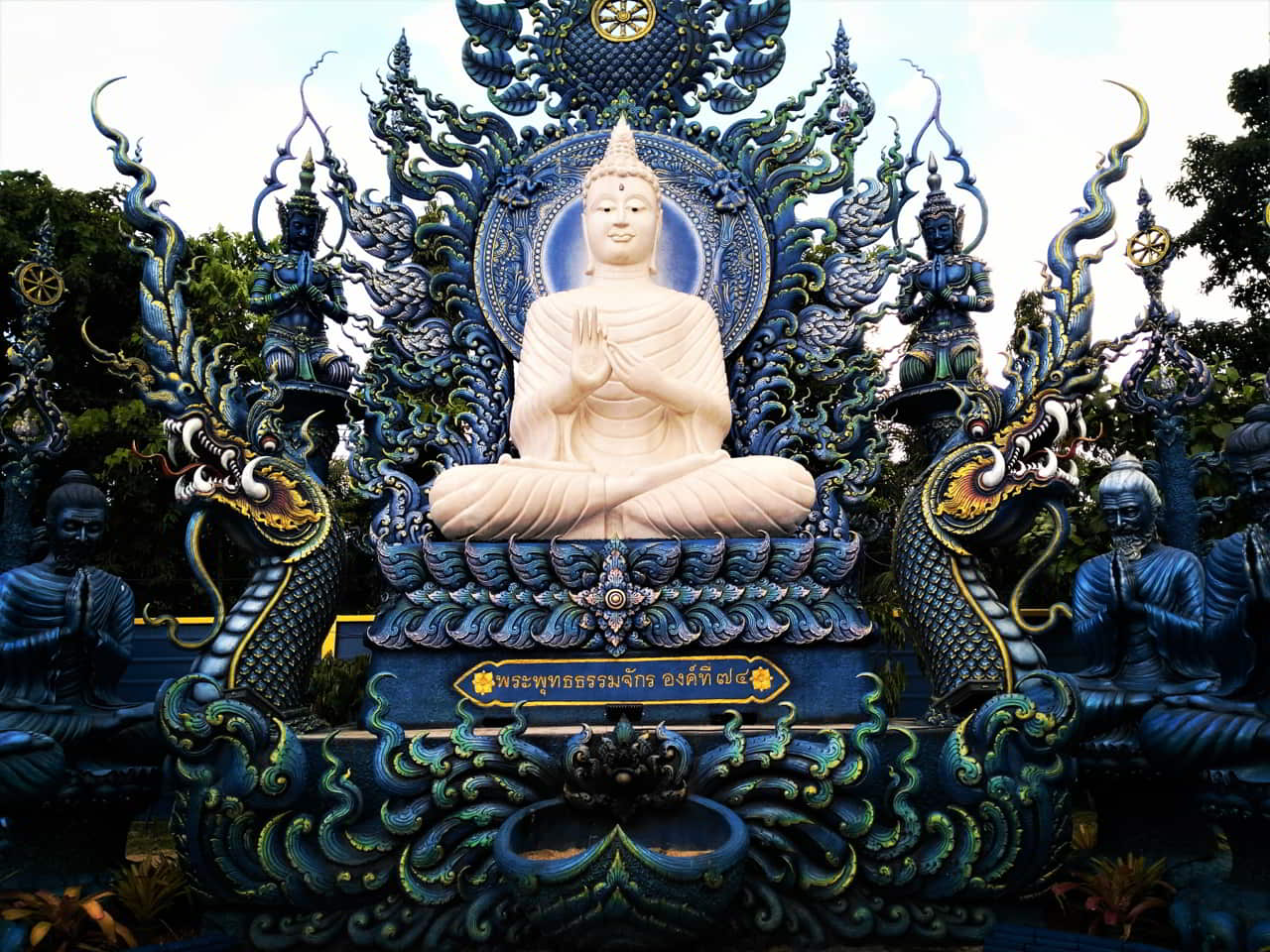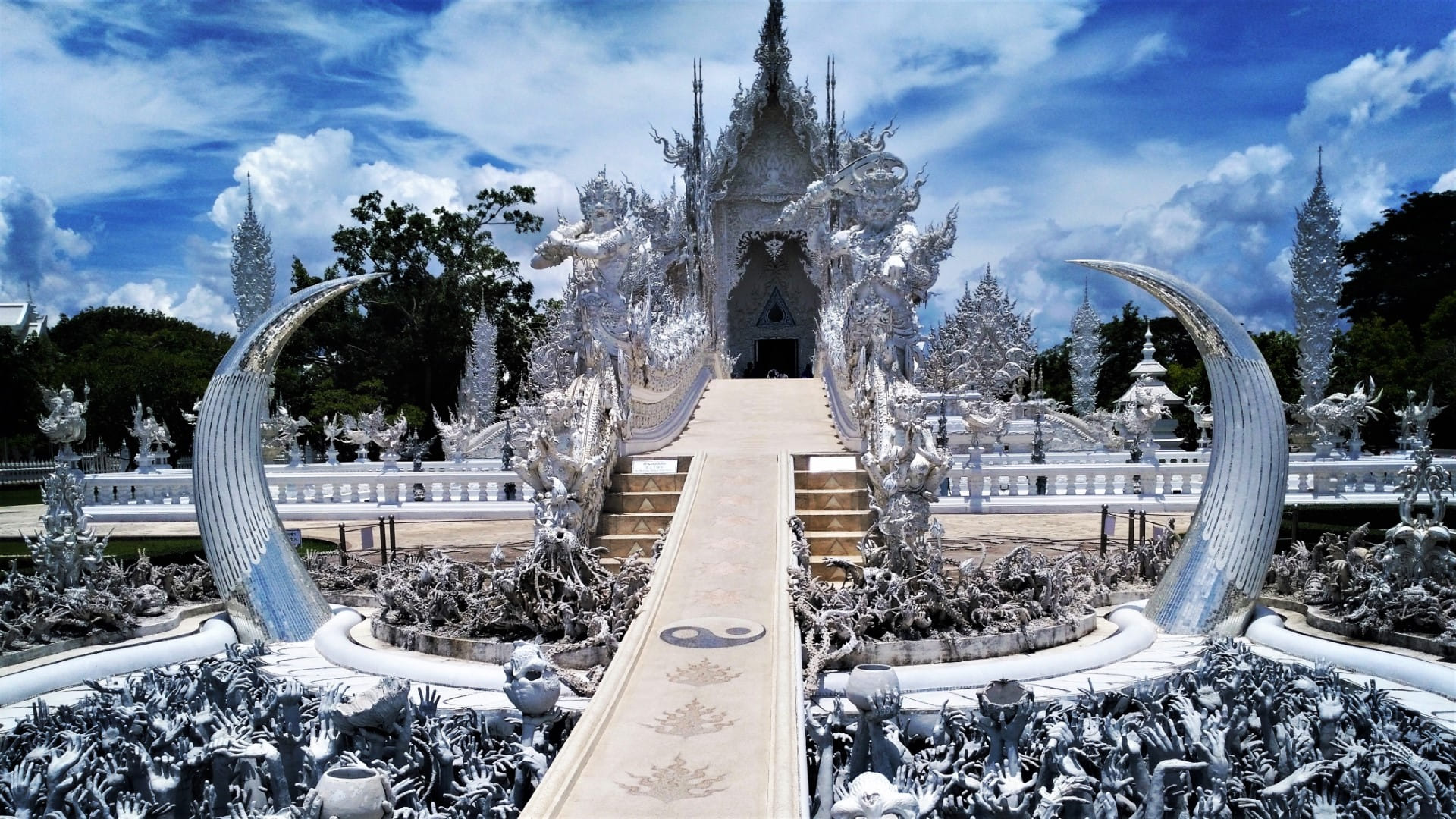
The Blue Temple: Chiang Rai's hidden gem
The Chiang Rai region boasts some uncommon Wats characterized by the omnipresence of a color. Less known than the White Temple, the Blue Temple is worth a visit. Exploring a truly unique place.
History of the Blue Temple of Chiang Rai
The history of the Blue Temple of Chiang Rai is a fascinating tale. Wat Rong Suea Ten had been abandoned for many years. Nestled in the heart of a small village, this temple earned its notoriety due to the frequent visits of tigers, who found it an ideal spot to rest and play, much to the chagrin of the villagers. The name Wat Rong Suea Ten can be roughly translated as “the temple of the dancing tigers.” This ongoing presence eventually led to the temple’s abandonment.
It wasn’t until 1996 that the locals returned to the site. After more than a century without human presence, the restoration of the temple began. The old Wat has since been replaced by the renowned Blue Temple, a recent construction with a few deviations from the original temple’s design.
The Blue Temple or Wat Rong Suea Ten is located 3km from Chiang Rai city centre. As its name suggests, its most distinctive feature is its color: blue. Blue is omnipresent and imparts a unique character to the temple. The main building, with its traditional architecture, stands as a monument with a distinctive charm.
The statues, both inside and outside the temple, are accentuated by the interplay of contrasting colors. Whether it’s the imposing Buddha within the Ubusoth or the white Buddha situated at the rear of the Ubusoth, both exude a majestic presence and an extraordinary sense of sacredness. The same holds true for the murals, which challenge conventional norms and expectations.
Why choose the color blue for this temple?
While it’s easy to understand the significance of the famous White Temple in Chiang Rai as a symbol of purity, the color blue is less explicit.
In fact, there are several possible interpretations. In Thailand, blue is generally associated with the color of the monarchy, and more specifically with the Queen. However, the blue present in the temple is not a light blue as can be seen in Queen Sirikit’s flag. Instead, it’s a dark blue, similar to lapis lazuli. In Buddhism, this color, reminiscent of the night sky, holds significant meanings of scarcity and purification. It is said to have the power to ward off negative thoughts and bring inner peace. Hence, lapis lazuli is often worn as a pendant, as it is in direct contact with the throat chakra, enabling better communication by calming negative thoughts.
Practical information about Wat Rong Suea Ten
- Open every day from 07h00 to 20h00. Free admission.
- Blue Temple - Address:
306 หมู่ที่ 2 Maekok Rd,
Tambon Rim Kok, Mueang Chiang Rai District,
Chiang Rai 57100 - Wat Rong Suea Ten - Blue Temple. - Audio guides are available.
- No restrictions on photography (no flash).
Dress Code:
Thai temples often enforce a dress code that may require visitors to cover their shoulders and knees. It’s advisable to dress accordingly to avoid any unpleasant surprises!
How to get to Chiang Rai Blue Temple
How to get there:
- There is no public transport to Wat Rong Suea Ten. It’s easy to get there by scooter or car.
- For the more sporty, cycling is also an excellent option.
- Alternatively, you can take a tuk-tuk or taxi, or use Grab or Bolt via the app.






